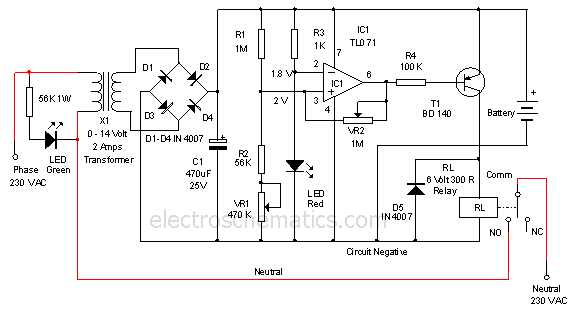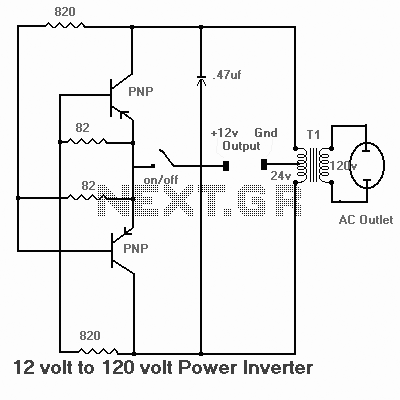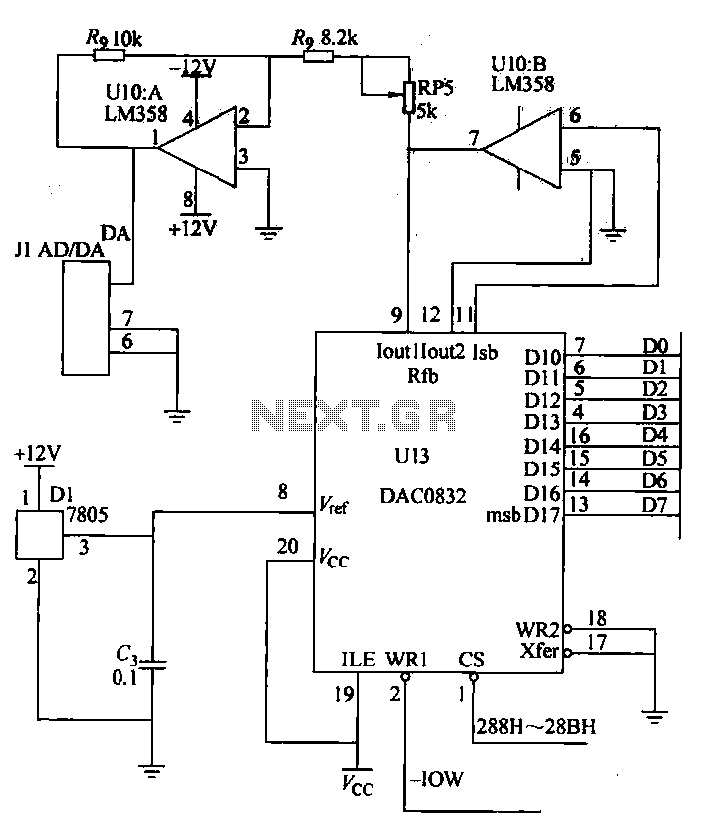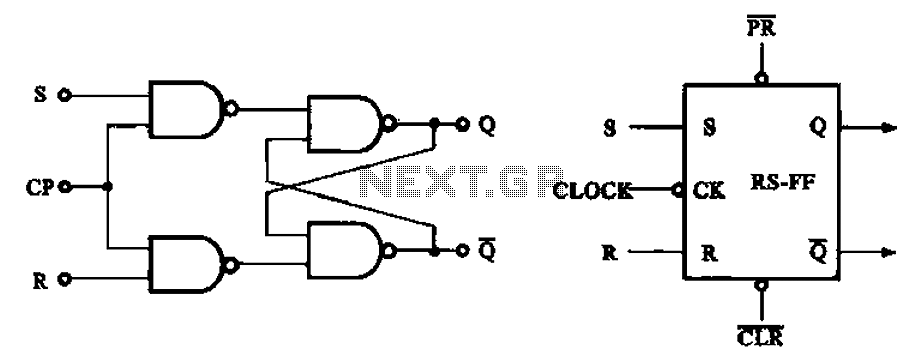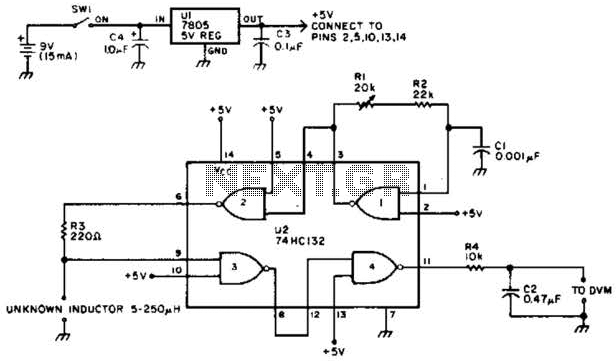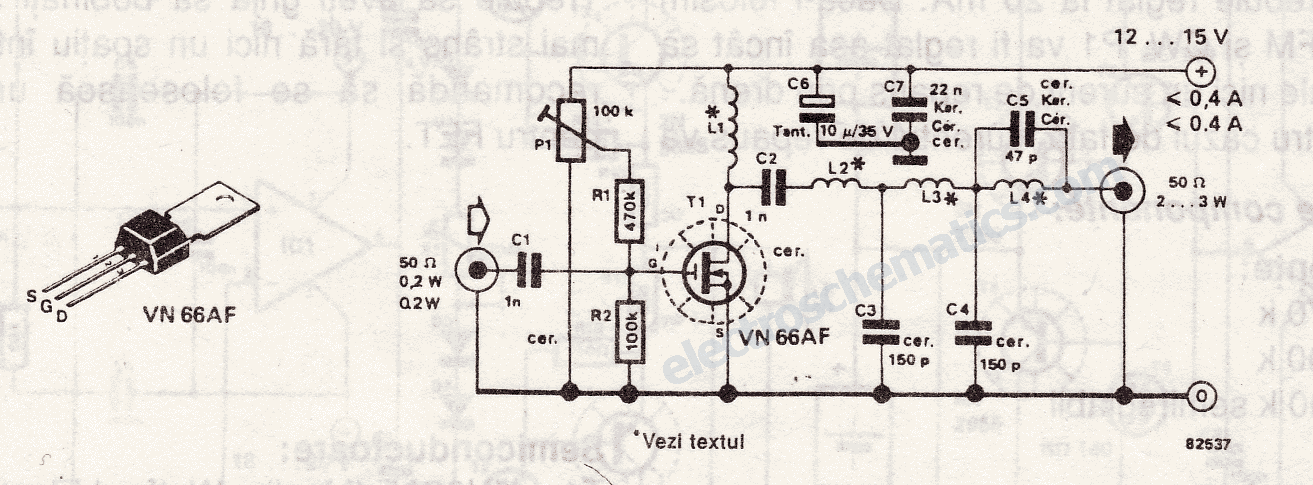
Antenna selector circuit diagram using PIN diodes

This antenna selector circuit diagram utilizes PIN diodes, which address the drawbacks of mechanical switches, particularly in high-frequency current applications. PIN diodes are well-suited for this purpose due to their linear resistance characteristics across a wide range of current values. This feature makes them ideal for various applications, such as signal mitigation, equalization, or amplitude modulation of high-frequency signals by adjusting the current bias. Capacitors C1, C4, and C9 are included to prevent DC signals from entering or exiting the circuit. Inductors L1 and L5 are employed to prevent leakage to the ground and ensure the integrity of the high-frequency signal. Resistors R2 and R5 are used to connect the unused diode anodes to ground, preventing the mixing of different antenna signals. Inductors L1 and L5 can be wound on a ferrite core using 0.3 mm diameter enameled copper wire, with two turns sufficient for VHF and UHF applications (1 µH is required for UHF and approximately 5 µH for VHF). The circuit is designed for antennas with input impedances of 50 to 75 ohms.
This antenna selector circuit effectively utilizes PIN diodes to provide a reliable and efficient means of switching between antennas without the mechanical wear and limitations associated with traditional switches. The linear resistance of the PIN diodes allows for precise control over signal modulation, which is critical in high-frequency applications where signal integrity is paramount. The inclusion of capacitors C1, C4, and C9 serves to isolate the DC components from the RF signals, ensuring that only the intended high-frequency signals are processed, thereby enhancing the overall performance of the circuit.
Inductors L1 and L5 play a crucial role in maintaining signal quality by preventing unwanted leakage currents that could distort the high-frequency signals. The design of these inductors on a ferrite core enhances their inductive properties, making them effective at the frequencies of interest. The choice of using enameled copper wire of a specific gauge (0.3 mm) and the precise number of turns (two) are optimized for the desired inductance values needed for both VHF and UHF bands, ensuring that the circuit maintains the necessary impedance matching for optimal signal transfer.
Resistors R2 and R5 are strategically placed to ground the unused diode anodes, which is essential for preventing cross-talk between different antenna signals. This design consideration is critical for applications where multiple antennas may be used simultaneously, as it ensures that only the selected antenna's signal is processed, thereby avoiding interference and maintaining signal clarity.
Overall, this antenna selector circuit is a sophisticated solution for managing multiple antennas in high-frequency applications, providing flexibility and reliability while maintaining signal integrity through careful component selection and circuit design.This antenna selector circuit diagram uses PIN diodes which eliminate disadvantages of mechanical switches (especially at high frequency current) PIN diodes can be used which are ideal for this purpose. Resistance diodes such changes linearly in a wide range of current values. This feature is ideal for a number of applications: by changing the cur rent-biased, the PIN diode can be used for mitigation, equalization or amplitude modulation of high frequency signals. Capacitors C1. C4 and C9 are used for preventing the entry and exit DC circuit. L1 shock. L5 prevent leakage to the table, the bar food, the HF signal. Resistances R2. R5 ensure that their unused diode anodes to be connected to ground, so that it is impossible to mix different antenna signals.
L1 shock. L5 can be wound on a ferrite core, using enamelled copper wire of 0. 3 mm diameter, two turns will be enough entries for the VHF UHF and 5 (1 uH is required for UHF and VHF about 5 uH). The circuit was designed for antennas with input impedance of 50. 75 ohms. 🔗 External reference
This antenna selector circuit effectively utilizes PIN diodes to provide a reliable and efficient means of switching between antennas without the mechanical wear and limitations associated with traditional switches. The linear resistance of the PIN diodes allows for precise control over signal modulation, which is critical in high-frequency applications where signal integrity is paramount. The inclusion of capacitors C1, C4, and C9 serves to isolate the DC components from the RF signals, ensuring that only the intended high-frequency signals are processed, thereby enhancing the overall performance of the circuit.
Inductors L1 and L5 play a crucial role in maintaining signal quality by preventing unwanted leakage currents that could distort the high-frequency signals. The design of these inductors on a ferrite core enhances their inductive properties, making them effective at the frequencies of interest. The choice of using enameled copper wire of a specific gauge (0.3 mm) and the precise number of turns (two) are optimized for the desired inductance values needed for both VHF and UHF bands, ensuring that the circuit maintains the necessary impedance matching for optimal signal transfer.
Resistors R2 and R5 are strategically placed to ground the unused diode anodes, which is essential for preventing cross-talk between different antenna signals. This design consideration is critical for applications where multiple antennas may be used simultaneously, as it ensures that only the selected antenna's signal is processed, thereby avoiding interference and maintaining signal clarity.
Overall, this antenna selector circuit is a sophisticated solution for managing multiple antennas in high-frequency applications, providing flexibility and reliability while maintaining signal integrity through careful component selection and circuit design.This antenna selector circuit diagram uses PIN diodes which eliminate disadvantages of mechanical switches (especially at high frequency current) PIN diodes can be used which are ideal for this purpose. Resistance diodes such changes linearly in a wide range of current values. This feature is ideal for a number of applications: by changing the cur rent-biased, the PIN diode can be used for mitigation, equalization or amplitude modulation of high frequency signals. Capacitors C1. C4 and C9 are used for preventing the entry and exit DC circuit. L1 shock. L5 prevent leakage to the table, the bar food, the HF signal. Resistances R2. R5 ensure that their unused diode anodes to be connected to ground, so that it is impossible to mix different antenna signals.
L1 shock. L5 can be wound on a ferrite core, using enamelled copper wire of 0. 3 mm diameter, two turns will be enough entries for the VHF UHF and 5 (1 uH is required for UHF and VHF about 5 uH). The circuit was designed for antennas with input impedance of 50. 75 ohms. 🔗 External reference
